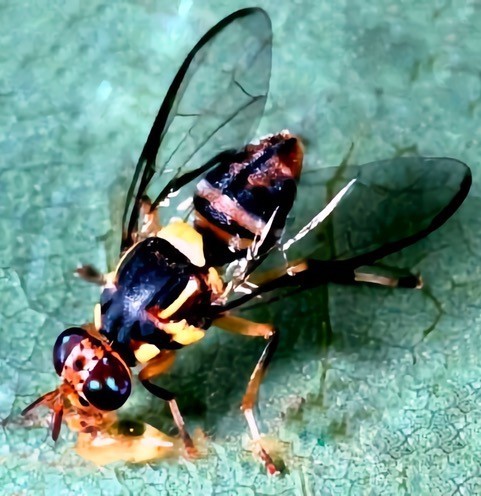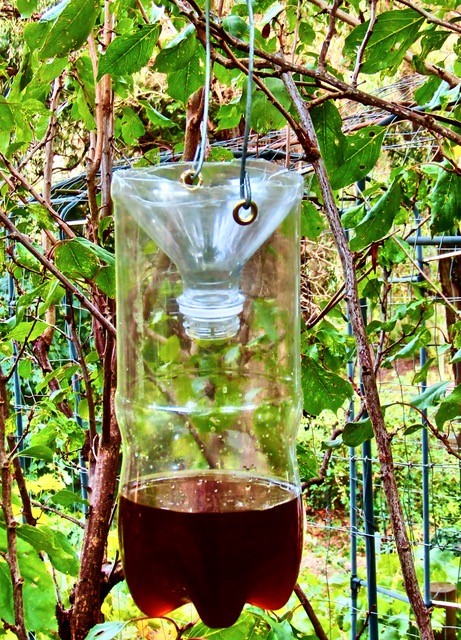March 29th, 2021Glen: About the house
For a start, there are many forms of fruit fly including the cucumber fly which attacks all forms of the cucurbit/melon family along with tomatoes, eggplants etc. But the main protagonists are the reddish brown with yellow markings Queensland fruit fly and the smaller, usually yellow, brown-banded wings Mediterranean fruit fly.
These two fruit flies have similar life cycles and are both considered serious pests in most areas. But it’s the Queensland variety in its seemingly unstoppable plague proportions that demands our constant attention and action. And it’s a year-round task.

Fortunately so far the attacks are mostly limited to warmer, fruit and vegetable-growing areas but that doesn’t mean we’re totally immune. It only takes a few maggot- infested fruit to be carelessly thrown out onto the roadside or a compost heap for a new colony to breed.
Their larvae reach about 7-9mm fully grown and leave the fruit at that stage to burrow down into the soil to pupate in elongated brown pupal cases. The females are capable of laying their own eggs within a week of emergence.
The adults may survive over winter for many weeks, feeding on sweet liquids such as the honeydew excreted by aphids and other similar insects. Another good reason to keep your garden aphid-free. They become active when warm weather begins in August and lay their eggs in whatever fruit, such as citrus, are starting to ripen.
Control
Cleanliness in the garden is the first and probably best defence. Never leave fallen fruit on the ground or infested fruit on the tree. It should be removed and destroyed by burning or boiling.
Other methods are immersing the fruit for several days in water with a layer of kerosene on top.
Or you can leave them in the sun for at least three days in a tightly-sealed plastic bag. It must not be buried as it would simply continue their life cycle.
Fly traps
Fortunately, fruit flies can be attracted and trapped before they reach your fruit by using exactly the same method and traps as for European wasps. That goes, in fact, for almost any fruit-loving flying insect.

There is no need to purchase a trap, you can simply make your own using an empty plastic drink bottle and some light wire, pictured. I happen to have one of those small eyelet punches to reinforce the holes, but that isn’t totally necessary.
For the bait you can purchase attractants from most hardware or garden outlets or, like me, mix your own. Fruit flies love vinegar so make them up a cocktail of three or four parts vinegar to one of fruit juice. But why stop at one? Strategically place several of them as a ring of protection.
Begin your campaign just after the fruit blossoms wilt and the fruit buds start to emerge.
If you wish to mount a “belt and braces” attack once the fruit starts to colour, you could also spray the trees with one of the many safe organic pesticides now available at almost any garden supply outlet.
Cuttings
This wet/warm weather is a great chance to do a spot of gardening out of the weather and a great opportunity and time to try striking cuttings of your favourite shrubs and woody perennials.
Some of the hardier types can simply be put into a sand-filled hole in a sheltered part of the garden, but the more difficult varieties will need to be placed into pots or boxes of coarse sand, or a mixture of equal parts peat moss and sand. Place the pots in a large plastic tub or box with a sheet of clear plastic or glass over the top and locate it in a warm, semi-shaded spot.

Got a gardening question? Ask Glen. Email glenzgarden@gmail.com










